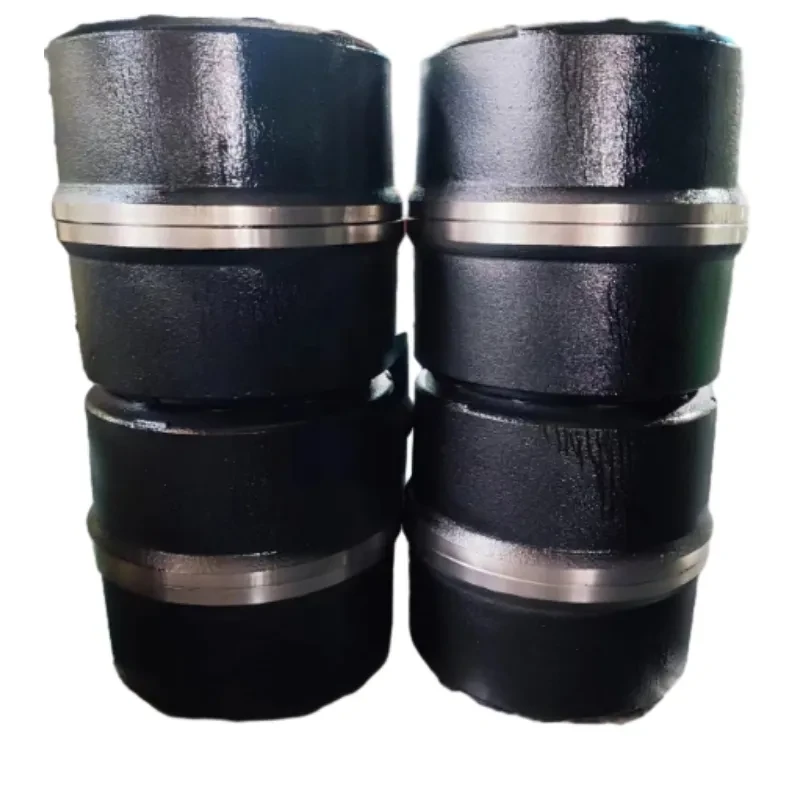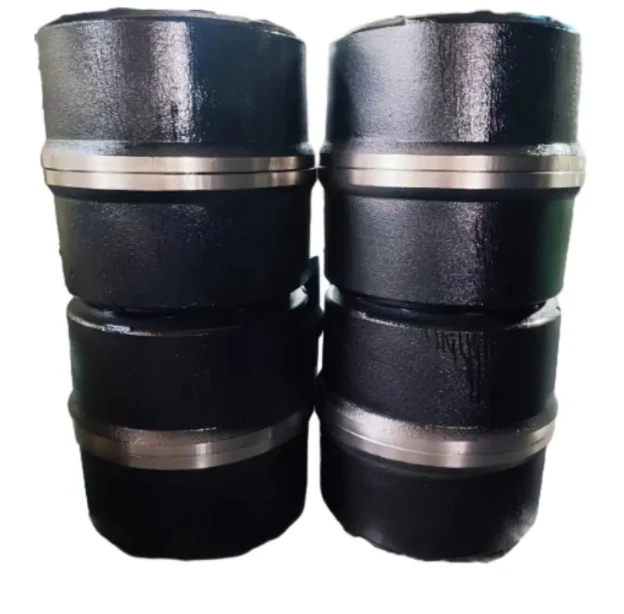Cost to Replace Brake Shoes and Drums Affordable & Reliable Service
- Understanding the cost factors for replacing brake shoes and drums
- Technical advancements in brake components and their impact
- Comparing leading manufacturers: costs and features
- Custom replacement options tailored for specific needs
- Real-world application cases and performance data
- Ensuring maximum value and long-term reliability
- Summary: Key insights on the cost to replace brake shoes and drums

(cost to replace brake shoes and drums)
Understanding the Cost to Replace Brake Shoes and Drums
The cost to replace brake shoes and drums is influenced by a spectrum of variables including vehicle make, model, geographical location, and the quality of replacement parts. Typically, the national average ranges from $250 to $650 for rear axle replacement in most passenger cars as of 2024. Labor charges alone generally constitute 35-50% of the total cost, averaging between $100 and $350 depending on regional labor rates and workshop standards. Furthermore, part quality varies: OEM parts can cost up to 35% more than aftermarket alternatives, yet may offer better fitment and durability outcomes. Cost fluctuations are also shaped by vehicle class—compact family sedans versus heavier SUVs or trucks often see a 20-40% premium due to larger, more robust drum and shoe assemblies. Complimentary inspections and warranty coverage can similarly impact total expenditure, contributing to decision-making for both private owners and fleet operators.
Technical Advancements in Brake Drums and Shoes
Recent innovations in brake technology have dramatically affected both the replacement frequency and lifecycle costs associated with brake shoes and drums. One technical breakthrough is the application of advanced friction materials, including high-ceramic and low-metallic compounds, which increase wear resistance and decrease dust and noise generation. Current data shows that these materials extend average service intervals by 18-24%, reducing replacement frequency over five years. Similarly, lightweight composite drum constructions, using polymers or specialized alloys, decrease unsprung mass, improving vehicle handling while maintaining heat dissipation. Such advancements not only lower the cost to replace brake drums and shoes over time but also enhance safety standards per recent NHTSA crash test reporting. In addition, many brake manufacturers have adopted anti-corrosion coatings and modular architectures, resulting in longer component life and swift, less labor-intensive installations. All these improvements help lower the cost related to recurrent brake maintenance, making investments in higher-grade replacement parts increasingly appealing over time.
Comparing Manufacturer Costs and Product Features
The following table illustrates a direct comparison between three industry-leading manufacturers based on pricing, warranty, material, and estimated longevity for rear brake drum and shoe replacement:
| Manufacturer | Average Part Cost (USD) | Material Type | Warranty (Months/Miles) | Estimated Service Life (Miles) |
|---|---|---|---|---|
| ACDelco | $160 (Shoes + Drums, per axle) | High-ceramic, Cast Iron Drum | 24 / 24,000 | 35,000 – 45,000 |
| Bosch | $185 (Shoes + Drums, per axle) | Low-metalllic, Composite Drum | 36 / 36,000 | 40,000 – 50,000 |
| Raybestos | $145 (Shoes + Drums, per axle) | Semi-metallic, Alloy Drum | 18 / 18,000 | 28,000 – 38,000 |
From this comparison, Bosch offers both extended warranty coverage and higher mileage estimates, although at a 15% premium to the most budget-friendly options. In contrast, Raybestos targets entry-level applications with competitive pricing but somewhat reduced longevity. These differences underscore the importance of aligning product selection with specific vehicle usage, budget, and performance priorities.
Custom Replacement Solutions Tailored to Application
There is a growing trend toward custom-tailored brake drum and shoe replacements designed to match routine usage, environmental exposure, and driver habits. For commercial fleets—such as delivery vans or municipal buses—custom solutions can include oversized drums, premium-grade shoes, and upgraded return springs, which together can extend service life by as much as 35%. Aftermarket specialists now offer fitment kits engineered for extreme environments, providing upgraded corrosion coatings and heat mitigation features, often warranted for up to 50,000 miles. In climate-intensive regions, such as Northern states with frequent road salt use, drivers may prefer replacement kits with enhanced rust resistance and high-temperature linings. Urban commuters, on the other hand, benefit from quieter, low-dust formulations reducing residue accumulation on wheels and suspensions. These tailored solutions, while carrying a slight cost premium, deliver a significant return on investment by minimizing downtime and mitigating premature wear—critical factors for both commercial operators and private owners concerned about the cost to replace rear brake drums and shoes over the vehicle lifecycle.
Application Cases and Performance Metrics
An in-depth review of practical use-cases illustrates how customization and proper product selection add clear value to the replacement process. In a fleet of parcel delivery trucks operating 80,000 miles annually, a shift from conventional semi-metallic to high-ceramic brake shoes, combined with composite drums, reduced annual service events by 27% and realized a net cost savings of approximately $1,200 per vehicle per year—including reduced downtime and parts. Conversely, an urban rideshare operator experienced extended pad life by 18% after switching to anti-corrosion drum assemblies and low-dust linings, decreasing cleaning labor and improving passenger feedback. Warranty claim data reveals that installations using brand-issued fitment kits experience up to 40% fewer warranty returns than generic alternatives—an important consideration for those balancing high usage rates with long-term ownership costs. These realizations reinforce the role of data-driven product selection and highlight the quantifiable advantages of investing in advanced, application-tuned brake replacement strategies.
Ensuring Maximum Value and Long-term Reliability
Maintaining a low total cost of ownership requires more than simply minimizing upfront expenses. Careful attention to correct installation, routine inspection intervals, and the use of factory-compliant lubricants and hardware are essential for realizing full lifespan potential. The initial cost to replace brake drums and shoes may be offset further when considering warranty coverage, as many leading brands provide free replacement for defects or premature wear within set mileage or timeframes. Routine adjustment of drum brakes, especially on rear axles with automatic parking mechanisms, extends service intervals and reduces the risk of uneven wear—a frequent cause of recurrent repair costs. Additionally, labor cost considerations are best evaluated alongside anticipated vehicle downtime, as quick-install kits offered by some manufacturers reduce service time by up to 30%. Choosing certified technicians and authentic replacement parts, even at a modest premium, continues to yield long-term savings in terms of both performance and overall system integrity.
Summary: Key Insights on the Cost to Replace Brake Shoes and Drums
The modern automotive landscape offers an unprecedented array of choices for the replacement of brake shoes and drums, each with distinct cost, durability, and performance characteristics. Data shows a national replacement cost range of $250-$650 per rear axle, with market-leaders like Bosch and ACDelco providing superior longevity but requiring a slightly higher investment. Advances in materials—high-ceramic compounds, composite drums, anti-corrosion coatings—deliver tangible reductions in service frequency and improved vehicle safety. Fleet data and consumer application cases underline the value of customized solutions in reducing total operational costs, particularly in high-mileage or challenging environments. Ultimately, maximizing value goes beyond the sticker price, demanding an integrated approach that blends best-fit product selection, skilled installation, and adherence to maintenance best practices. With dedicated attention to these factors, drivers and fleet managers can achieve optimal safety, efficiency, and enduring value, keeping the cost to replace brake shoes and drums under firm control.

(cost to replace brake shoes and drums)
FAQS on cost to replace brake shoes and drums
Q: What is the average cost to replace brake shoes and drums?
A: The average cost to replace brake shoes and drums typically ranges from $250 to $400 per axle, including parts and labor. Prices can vary depending on your vehicle make and model. Local labor rates also influence the final price.Q: How much does it cost to replace brake drums and shoes at a repair shop?
A: Repair shops generally charge between $275 and $500 to replace both brake drums and shoes. The cost includes labor and parts. Luxury or specialty vehicles may cost more.Q: What are the factors that affect the cost to replace rear brake drums and shoes?
A: Factors include your car's make and model, the cost of parts, and local labor rates. Additional services like hardware replacement may also increase expenses. Always get a detailed quote from your mechanic.Q: Can I save money by replacing brake drums and shoes myself?
A: Yes, DIY replacement can save on labor costs, reducing total expenses to around $100–$250 for parts. However, proper knowledge and tools are required. Safety is paramount when performing brake repairs.Q: How often should I replace rear brake drums and shoes, and what cost should I expect?
A: Rear brake drums and shoes generally need replacement every 30,000–70,000 miles. Expect the cost for parts and labor combined to be from $250 to $400 per axle. Frequency and final price depend on driving habits and vehicle type.-
The Power and Reliability of Brake DrumsBeritaAug.27,2025
-
The High-Quality Truck Brake DrumsBeritaAug.27,2025
-
Quality Brake Drums for Reliable PerformanceBeritaAug.27,2025
-
Get the Quality Semi Trailer Brake Drums for Your FleetBeritaAug.27,2025
-
Everything You Need to Know About Brake DrumsBeritaAug.27,2025
-
Enhance Your Vehicle's Performance with Reliable Brake DrumsBeritaAug.27,2025
-
Truck Drum Brake Spring Replacement ProcedureBeritaAug.22,2025


